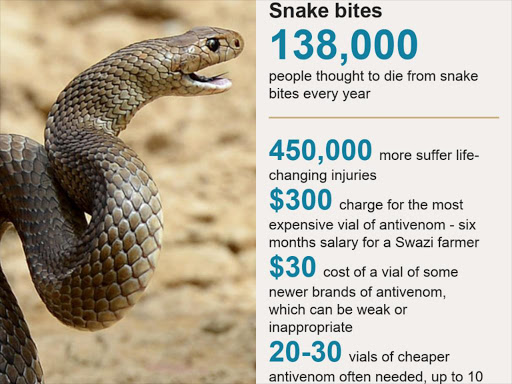The World Health Organisation (WHO) has drawn up a plan to cut the number of people who are killed by snakebites in half, from its current estimated level of up to 138,000 per year.
Snake poisoning is a neglected disease “that is responsible for enormous suffering, disability and premature death on every continent,” the UN health agency said on Tuesday in Geneva.
The agency said that low-income countries bear an especially large burden.
Every day, some 7,400 people are bitten, and between 220 and 380 die, adding up to about 2.7 million cases of poisoning each year.
An estimated 400,000 people suffer long-term damage annually, including blindness and amputations.
READ ALSO: Tribunal adjourns pre-hearing in Rep. Dasuki’s petition for wrong service
The WHO’s prevention and control strategy to halve the number of lethal cases by 2030 includes engaging local communities.
According to the WHO, children get bitten on their way to school, farmers encounter snakes on their fields, and women face risks when going to the toilet.
Report says the UN health agency plans to get people to wear shoes in at-risk areas, and to trained traditional healers so that they can send bite victims to medical clinics.
In addition, locals are set to be trained in first aid.
The WHO also seeks to create a stable market for reasonably priced medications to end the current crisis in the supply of antivenoms.
According to the UN agency, public-private partnerships will be required to achieve these goals. (NAN)


